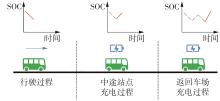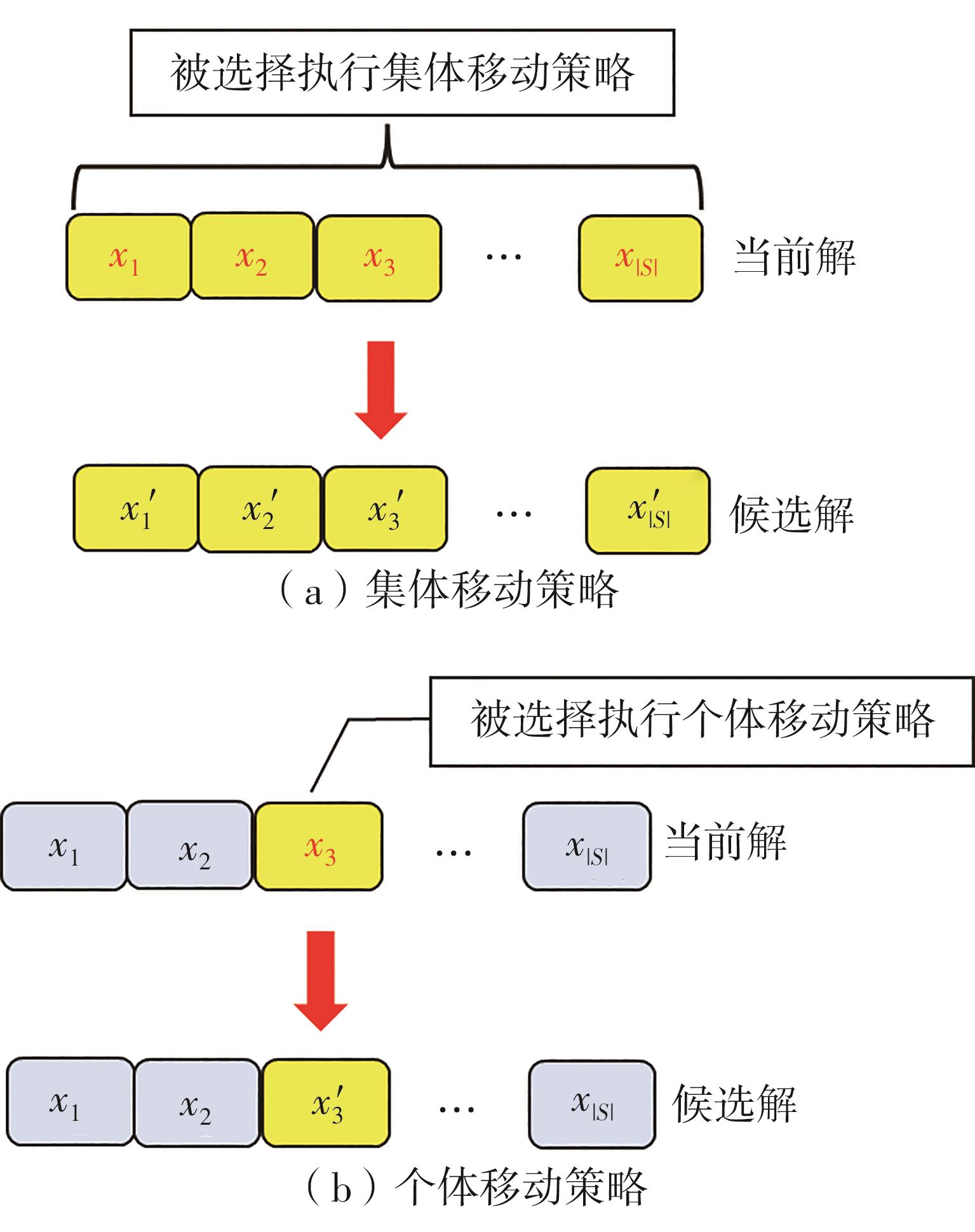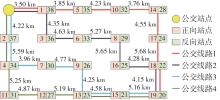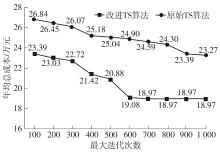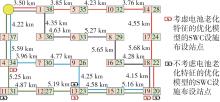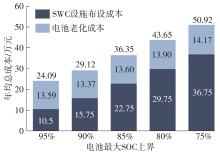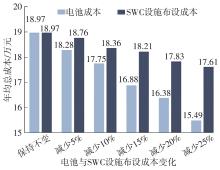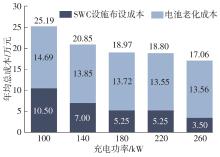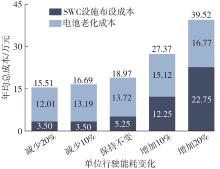Journal of South China University of Technology(Natural Science Edition) ›› 2024, Vol. 52 ›› Issue (6): 45-55.doi: 10.12141/j.issn.1000-565X.230359
Special Issue: 2024年绿色智慧交通
• Green & Intelligent Transportation • Previous Articles Next Articles
Layout Optimization of Static Wireless Charging Facilities for Electric Buses by Considering Battery Degradation Characteristics
WANG Yongxing1( ), BI Jun1,2(
), BI Jun1,2( ), XIE Dongfan1, SAI Qiuyue3
), XIE Dongfan1, SAI Qiuyue3
- 1.School of Traffic and Transportation,Beijing Jiaotong University,Beijing 100044,China
2.Key Laboratory of Transport Industry of Big Data Application Technologies for Comprehensive Transport,Beijing Jiaotong University,Beijing 100044,China
3.Institute of Scientific and Technical Information of China,Beijing 100038,China
-
Received:2023-05-26Online:2024-06-10Published:2023-09-08 -
Contact:BI Jun E-mail:yx.wang@bjtu.edu.cn;jbi@bjtu.edu.cn -
Supported by:the National Natural Science Foundation of China(72301020)
CLC Number:
Cite this article
WANG Yongxing, BI Jun, XIE Dongfan, SAI Qiuyue. Layout Optimization of Static Wireless Charging Facilities for Electric Buses by Considering Battery Degradation Characteristics[J]. Journal of South China University of Technology(Natural Science Edition), 2024, 52(6): 45-55.
share this article
| 1 | 曲小波,刘亚君,陈雨薇,等 .城市电动公交车辆运营管理:综述与展望[J].汽车安全与节能学报,2022,13(3):407-420. |
| QU Xiaobo, LIU Yajun, CHEN Yuwei,et al .Urban electric bus operation management:review and outlook[J].Journal of Automotive Safety and Energy,2022,13(3):407-420. | |
| 2 | LAJUNEN A .Lifecycle costs and charging requirements of electric buses with different charging methods[J].Journal of Cleaner Production,2018,172:56-67. |
| 3 | WANG J, KANG L, LIU Y .Optimal scheduling for electric bus fleets based on dynamic programming approach by considering battery capacity fade[J].Renewable and Sustainable Energy Reviews,2020,130:109978/1-13. |
| 4 | 徐桂芝,李晨曦,赵军,等 .电动汽车无线充电电磁环境安全性研究[J].电工技术学报,2017,32(22):152-157. |
| XU Guizhi, LI Chenxi, ZHAO Jun,et al .Electromagnetic environment safety study of wireless electric vehicle charging[J].Transactions of China Electrotechnical Society,2017,32(22):152-157. | |
| 5 | BI Z, KLEINE R, KEOLEIAN G .Integrated life cycle assessment and life cycle cost model for comparing plug-in versus wireless charging for an electric bus system[J].Journal of Industrial Ecology,2017,21(2):344-355. |
| 6 | ZHANG Y, ZHAO Z .Frequency splitting analysis of two-coil resonant wireless power transfer[J].IEEE Antennas and Wireless Propagation Letters,2014,13:400-402. |
| 7 | CHEN G, HU D, CHIEN S .Optimizing battery-electric-feeder service and wireless charging locations with nested genetic algorithm[J].IEEE Access,2020,8:67166-67178. |
| 8 | CHEN G, HU D, CHIEN S,et al .Optimizing wireless charging locations for battery electric bus transit with a genetic algorithm[J].Sustainability,2020,12(21):8971/1-20. |
| 9 | LIU Z, SONG Z, HE Y .Optimal deployment of dynamic wireless charging facilities for an electric bus system[J].Transportation Research Record,2017,2647(1):100-108. |
| 10 | ALWESABI Y, LIU Z, KWON S .A novel integration of scheduling and dynamic wireless charging planning models of battery electric buses[J].Energy,2021,230:120806/1-14. |
| 11 | LIU Z, SONG Z .Robust planning of dynamic wireless charging infrastructure for battery electric buses[J].Transportation Research Part C:Emerging Technologies,2017,83:77-103. |
| 12 | ALWESABI Y, AVISHAN F, YANIKOGLU I,et al .Robust strategic planning of dynamic wireless charging infrastructure for electric buses[J].Applied Energy,2022,307:118243/1-21. |
| 13 | NAHUM O, HADAS Y .Multi-objective optimal allocation of wireless bus charging stations considering costs and the environmental impact[J].Sustainability,2020,12(6):2318/1-20. |
| 14 | BAI Z, YANG L, FU C .A robust approach to integrated wireless charging infrastructure design and bus fleet size optimization[J].Computers & Industrial Engineering,2022,168:108046/1-16. |
| 15 | 别一鸣,郝明杰,王琳虹 .专用道条件下电动公交线路静态无线充电设施布局优化[J].中国公路学报,2023,36(1):202-213. |
| BIE Yi-ming, HAO Ming-jie, WANG Lin-hong .Layout optimization of static wireless charging facilities for electric bus routes with dedicated bus lanes[J].China Journal of Highway and Transport,2023,36(1):202-213. | |
| 16 | WANG X, YUEN C, HASSAN N,et al .Electric vehicle charging station placement for urban public bus systems[J].IEEE Transactions on Intelligent Transportation Systems,2017,18(1):128-139. |
| 17 | HE Y, SONG Z, LIU Z .Fast-charging station deployment for battery electric bus system considering electricity demand charges[J].Sustainable Cities & Society,2019,48:101530/1-15. |
| 18 | 范艳红,杨奕晖,马茜,等 .基于分布式无线充电设备的电动公交车线路规划[J].电气自动化,2020,42(2):16-18. |
| FAN Yanhong, YANG Yihui, MA Qian,et al .Electric bus route planning based on distributed wireless charging equipment[J].Electrical Automation,2020,42(2):16-18. | |
| 19 | WANG Y, LIAO F, LU C .Integrated optimization of charger deployment and fleet scheduling for battery electric buses[J].Transportation Research Part D:Transport and Environment,2022,109:103382/1-18. |
| 20 | BI Z, KEOLEIAN G, TULGA E .Wireless charger deployment for an electric bus network:a multi-objective life cycle optimization[J].Applied Energy,2018,225:1090-1101. |
| 21 | 祝庆伟,吴启超,徐一丹,等 .镍钴铝锂离子电池在不同SOC区间的老化[J].浙江大学学报(工学版),2023,57(4):666-674. |
| ZHU Qing-wei, WU Qi-chao, XU Yi-dan,et al .Aging of nickel-cobalt-aluminum lithium-ion battery in different SOC intervals[J].Journal of Zhejiang University (Engineering Science),2023,57(4):666-674. | |
| 22 | 奇格奇,李丹,段梦媛,等 .考虑电动公交在途特性的电池状态梯次划分[J].中国公路学报,2022,35(8):44-54. |
| QI Ge-qi, LI Dan, DUAN Meng-yuan,et al .Echelon division of battery status considering on-road characteristics of electric buses[J].China Journal of Highway and Transport,2022,35(8):44-54. | |
| 23 | 刘良,李超,顾延光,等 .电动汽车锂离子电池碳负极扩散应力与微观结构失效机理研究[J].中国公路学报,2022,35(8):79-88. |
| LIU Liang, LI Chao, GU Yan-guang,et al .Study of the mechanism of diffusion stress and microstructure failure of carbon anode for lithium-ion batteries[J].China Journal of Highway and Transport,2022,35(8):79-88. | |
| 24 | OMAR N, MONEM M, FIROUZ Y,et al .Lithium iron phosphate based battery-assessment of the aging parameters and development of cycle life model[J].Applied Energy,2014,113:1575-1585. |
| 25 | LAM L, BAUER P .Practical capacity fading model for Li-ion battery cells in electric vehicles[J].IEEE Transactions on Power Electronics,2013,28(12):5910-5918. |
| 26 | ZHANG L, ZENG Z, QU X .On the role of battery capacity fading mechanism in the lifecycle cost of electric bus fleet[J].IEEE Transactions on Intelligent Transportation Systems,2021,22(4):2371-2380. |
| 27 | ZHANG L, WANG S, QU X .Optimal electric bus fleet scheduling considering battery degradation and non-linear charging profile[J].Transportation Research Part E:Logistics and Transportation Review,2021,154:102445/1-27. |
| 28 | 宋俪婧,白同舟,贺玉龙,等 .基于混合整数非线性规划的接驳公交优化模型[J].交通运输系统工程与信息,2022,22(3):104-111. |
| SONG Li-jing, BAI Tong-zhou, HE Yu-long .Feeder bus routes and frequency optimization based on mixed integer nonlinear programming[J].Journal of Transportation Systems Engineering and Information Tech-nology,2022,22(3):104-111. | |
| 29 | 陈煜婷,张惠珍 .双层级医疗设施选址问题及禁忌搜索算法[J].运筹与管理,2021,30(9):56-63. |
| CHEN Yu-ting, ZHANG Hui-zhen .Two-level medical facility location problem and tabu search algorithm[J].Operations Research and Management Science,2021,30(9):56-63. | |
| 30 | WANG Y, LU C, BI J,et al .Lifecycle cost optimization for electric bus systems with different charging methods:collaborative optimization of infrastructure procurement and fleet scheduling[J].IEEE Transactions on Intelligent Transportation Systems,2023,24(3):2842-2861. |
| 31 | BI J, WU Z, WANG L,et al .A Tabu search-based algorithm for airport gate assignment: a case study in Kunming,China[J].Journal of Advanced Transportation,2020,2020:8835201/1-13. |
| 32 | 雷雨龙,侯博宁,付尧,等 .基于贪心策略的电动车AMT换挡点实时优化方法研究[J].北京理工大学学报,2022,42(8):784-790. |
| LEI Yulong, HOU Boning, FU Yao,et al .Research on real-time optimization method of AMT shift point of electric vehicle based on greedy algorithm[J].Transactions of Beijing Institute of Technology,2022,42(8):784-790. | |
| 33 | NYKVIST B, NILSSON M .Rapidly falling costs of battery packs for electric vehicles[J].Nature Climate Change,2015,5(4):329-332. |
| [1] | HU Baoyu, QI Yue, JIA Dianjing, et al. Joint Optimization of Circular Line Electric Bus Vehicle Scheduling and Driver Scheduling [J]. Journal of South China University of Technology(Natural Science Edition), 2025, 53(6): 91-103. |
| [2] | XIONG Jie, LAI Kefan, LI Tongfei, et al. Charging Schedule Optimization of Battery Electric Bus Considering Nonlinear Charging Profile [J]. Journal of South China University of Technology(Natural Science Edition), 2024, 52(9): 115-130. |
| [3] | BIE Yiming, ZHU Aoze, CONG Yuan. Electric Bus Scheduling Method Considering Differences in the State of Health of Batteries [J]. Journal of South China University of Technology(Natural Science Edition), 2023, 51(10): 11-21. |
| [4] | ZHANG Wenhui, SU Jiaqi, HA Zihong, et al. Location and Capacity Optimization Model of Battery-Swapped Electric Bus Charging Station [J]. Journal of South China University of Technology(Natural Science Edition), 2023, 51(10): 126-134. |
| [5] | NIU Haiqing, CHEN Zeming, YAN Tianyou, et al. Optimization of Tunnel Multi-Loop Cable Based on Memetic Algorithm [J]. Journal of South China University of Technology (Natural Science Edition), 2021, 49(10): 141-150. |
| [6] | YAO Enjian LU Muyang LIU Yuhuan YUAN Ling. Electric Bus Area Driving Plan Preparation Considering Charging Constraints [J]. Journal of South China University of Technology(Natural Science Edition), 2019, 47(9): 68-73. |
| [7] | Chen Da-wei Xu Zhong Li Xu-hong . Layout Optimization Model of Regional Comprehensive Freight Hubs [J]. Journal of South China University of Technology (Natural Science Edition), 2009, 37(11): 31-36. |
| Viewed | ||||||
|
Full text |
|
|||||
|
Abstract |
|
|||||
